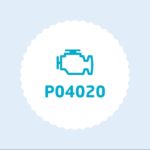Understanding your vehicle’s engine performance is crucial for diagnostics and modifications. One key parameter to monitor is the throttle command, which reflects how much power you’re requesting from the engine. Accessing this data through your vehicle’s On-Board Diagnostics II (OBD2) system is straightforward with the right tools and knowledge. This guide will explain how to find the throttle command on OBD2, empowering you to better understand your engine’s operation.
The OBD2 system is a standardized system in modern vehicles that provides access to various engine parameters. Throttle command, often referred to as throttle position or accelerator pedal position, is a vital piece of data. It indicates the percentage of throttle opening requested by the driver via the accelerator pedal. This information is essential for understanding engine load, diagnosing throttle-related issues, and even for performance tuning.
To find the throttle command on OBD2, you’ll need a few essential tools:
- OBD2 Scanner: This is the primary tool to interface with your vehicle’s OBD2 system. Scanners range from basic handheld devices to more advanced professional-grade tools.
- Vehicle with OBD2 Port: All cars and light trucks sold in the US since 1996 are OBD2 compliant and have a standard OBD2 port, usually located under the dashboard on the driver’s side.
- OBD2 Software or App: Many scanners come with their own software, or you can use third-party apps on your smartphone or laptop when paired with a Bluetooth OBD2 adapter (like ELM327).
Here’s a step-by-step process to find the throttle command:
- Locate the OBD2 Port: Turn off your vehicle’s ignition and find the OBD2 port.
- Connect the OBD2 Scanner: Plug your OBD2 scanner into the port. If using a Bluetooth adapter, pair it with your smartphone or laptop.
- Turn Ignition ON (Engine OFF): Turn your vehicle’s ignition to the “ON” position, but do not start the engine. This powers up the vehicle’s electronics and OBD2 system.
- Launch OBD2 Software/App and Connect: Open your OBD2 software or app and establish a connection with the vehicle’s ECU (Engine Control Unit). You may need to select the correct communication protocol if prompted (usually automatic).
- Access Live Data or Real-Time Data: Navigate to the “Live Data,” “Real-Time Data,” or similar section in your OBD2 software. This section displays real-time readings from various sensors.
- Find Throttle Position (or Accelerator Pedal Position): Look for parameters like “Throttle Position,” “Accelerator Pedal Position,” “Throttle Position Sensor,” or similar terms in the list of available data. The exact terminology may vary slightly depending on the vehicle and software.
- Monitor Throttle Command: Select the throttle position parameter to monitor it. The value is usually displayed as a percentage (0-100%). Press the accelerator pedal and observe the change in the throttle position reading. This confirms you’ve found the correct parameter.
Interpreting the throttle command is usually straightforward. 0% typically indicates the throttle is fully closed (idle), and 100% represents wide-open throttle (WOT). Values in between reflect the driver’s throttle input.
Finding the throttle command on OBD2 is a fundamental skill for anyone working on modern vehicles. Whether you’re diagnosing engine performance issues, monitoring fuel efficiency, or tuning your engine, understanding how to access and interpret this data is invaluable. By using an OBD2 scanner and following these steps, you can easily access this critical engine parameter and gain deeper insights into your vehicle’s operation.
